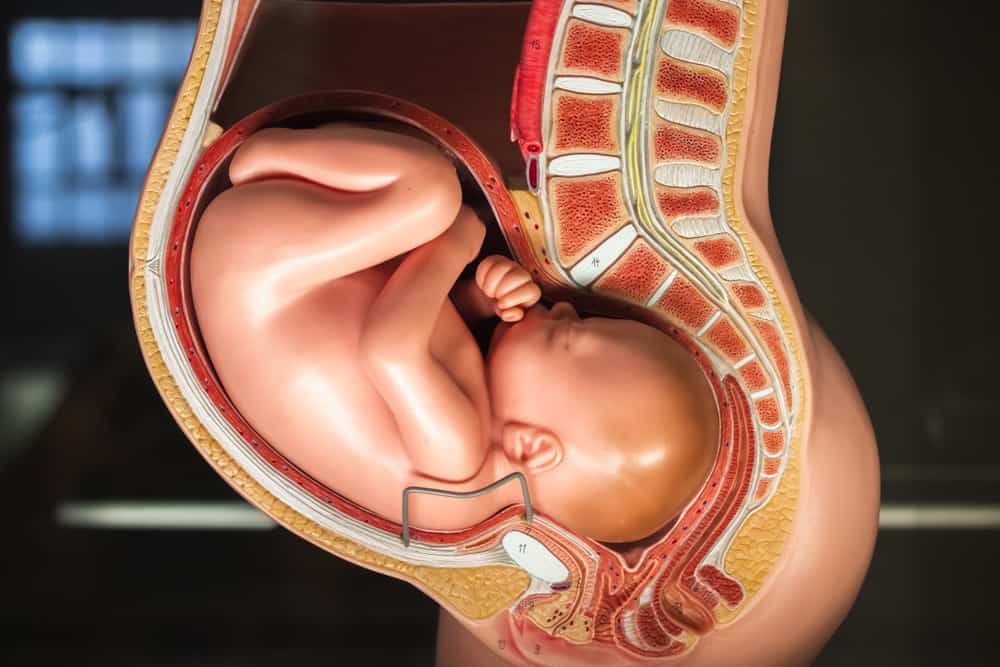As you approach your due date, you’ll probably notice that your belly seems to be hanging lower than usual.
The technical term for this change is engagement or lightening, and it happens when your baby’s head moves down into your pelvis.
But no two pregnancies are alike, and if you’re wondering how to tell if baby is engaged in pelvis, there are several signs to look out for, such as increased pressure in your pelvic region.
The appearance of your baby bump will change and other people will often notice it, as well.
The added pressure on your pelvis will see you spending more time in the bathroom and you might also struggle with back pain.
However, not all pregnant women experience engagement. If this is not your first baby, or if you’re pregnant with twins, your baby might not engage until you go into labor.
Regardless of when your baby engages, you shouldn’t worry about going into premature labor. Likewise, if your baby doesn’t engage before birth, this is not a sign that you’ll need a cesarean.
Read on to get all the information on how to tell if baby is engaged in pelvis, and what you can do to encourage your baby to move lower into your pelvis.
How To Tell If Baby Is Engaged In Pelvis

Before I tell you all about how to tell if baby is engaged in pelvis, we must answer a very simple question – what is engagement?
As you get closer to your due date, your pelvis prepares itself for the delivery. It stretches and adjusts to accommodate your baby as you give birth.
But the stretching and loosening of the pelvis doesn’t happen overnight. It’s a gradual process, during which the head of your baby drops further down into the pelvis.
A baby is described as being engaged after the widest part of the head drops into the pelvis.
However, women who have given birth before might not experience engagement until they actually go into labor.
If this is your first baby you might worry that this is a sign of early labor, but never fear – this is just another step in your body’s preparation for giving birth.
With a breech baby, it is the hips and not the head which move down. When the baby is in a breech position, your doctor will give you more details on how to proceed.
As always, if you have any questions your first point of contact should be your doctor. But there are some signs that can help you tell that your baby has engaged.
11 signs the baby has engaged

Here’s a brief overview of the signs of engagement:
• Increased pelvic pressure.
• Waddling.
• Back pain.
• Braxton-Hicks contractions.
• Hemorrhoids.
• Baby bump hangs lower.
• Loss of mucus plug.
• Less heartburn.
• Increased appetite.
• Easier to breathe.
• Less fetal movement.
One of the first signs that your baby has engaged is increased pressure on your pelvis.
This manifests itself in rather irritating symptoms – the baby’s head will be pressing down on your bladder, making your trips to the bathroom much more frequent.
Getting a good night’s sleep becomes harder as you will be getting up several times in the middle of the night to go to the bathroom.
Sometimes the sensation can be painful, or you might even feel like your baby is about to fall out.
Your walk might also become a waddle and it’s not uncommon to feel back pain, either.
Some women also experience Braxton-Hicks contractions, but you needn’t worry, you won’t go into labor just yet!
These contractions help your body prepare for giving birth and make your cervix thinner.
This late into the third trimester, you could get hemorrhoids as a result of the increased pressure on your pelvis, so keep an eye on your diet, be sure to drink plenty of water, and make sure you do everything you can to avoid constipation.
When your baby engages, you’ll also notice a change in the appearance of your baby bump.
It can become lower and appear as if it has “dropped”, which is why many people refer to engagement as the baby “dropping”. Other people might notice it too!
Another symptom of engagement is increased discharge. As the baby’s head is pressing down onto your cervix, you’ll start losing your mucus plug.
On a positive note, not all symptoms of engagement are uncomfortable.
It’s not uncommon for your pregnancy stomach issues, such as heartburn, to dissipate when the baby’s head drops.
At last, you can eat a meal without worrying that your stomach will make you regret it later!
The pressure on your lungs also disappears, so you can breathe more easily.
Around this time, many pregnant women start noticing that their baby is less active and wonder how they can get their baby to move.
However, the baby’s position when she’s engaged in the pelvis makes it harder for her to deliver a kick or jab to the ribs.
Stages of engagement

There are multiple stages of engagement, depending on how many fifths of the baby’s head your doctor can feel when pressing against your abdomen:
• 0/5 – Baby is engaged and the doctor can feel her head, as well as her back and front.
• 1/5 – Baby is engaged and the doctor can feel her head.
• 2/5 – Baby is engaged and the doctor can feel that the front of the head has gone past the edge of the pelvic inlet.
• 3/5 – Baby is engaged and the doctor can feel that the biggest part of the head has entered the edge of the pelvic inlet.
• 4/5 – Baby is not engaged as the head is only beginning to move into the pelvis.
• 5/5 – Baby is not engaged as the head is above the edge of the pelvic inlet.
When Will My Baby’s Head Engage

As you enter your third trimester and prepare to go into labour, you will almost certainly be anxious to know when your baby will engage.
During a woman’s first pregnancy, the baby engages sometime between the 34th and 38th weeks of pregnancy.
However, if this isn’t your first baby, don’t be surprised if this doesn’t happen until you’re ready to give birth.
Other than that, there are several factors that can cause your baby’s head to engage later, or right before labour starts. Here’s a brief overview:
• Baby is big.
• You’re pregnant with twins or multiples.
• Baby is in a posterior position.
• Baby is in an oblique or transverse position.
• The position of your placenta.
• The shape of your pelvis.
If you’re carrying a big baby, it’s entirely possible that she won’t properly engage until the onset of contractions. The same goes for pregnant women who are expecting multiples.
The position of your baby inside the womb can also make it harder for her to engage.
More specifically, if she’s in a posterior position, i.e her belly is facing yours and her back is positioned against yours, then it’s more difficult for the head to engage.
An anterior position, on the other hand, is the perfect position for the baby’s head to engage properly.
Your baby can also be in a transverse position, meaning that she’s lying across your belly, or at an angle, which is an oblique position.
This usually happens to women having their second or subsequent child, or if there is too much amniotic fluid.
As a result, the baby can move in different directions and doesn’t always end up in a head-down position.
The positioning of your placenta, and the way your pelvis is shaped, can also be a factor for why your baby’s head isn’t engaging properly.
Although you’re likely to feel your baby’s head engage, feel free to ask your doctor for confirmation at your next checkup. They’ll be able to answer all of your questions and alleviate your concerns.
Many new moms worry that a vaginal birth won’t be possible if the head of their baby doesn’t engage before contractions begin, and that they’ll need to be rushed in for a C-section.
Remember that during labor your baby can still move into a good position for exiting the birth canal, so don’t panic.
How To Make Baby’s Head Engage

Are there any natural ways of getting your baby to move further down your pelvic bone?
Yes! You can start off by making sure you’re sitting up straight – try not to slouch when you’re in a chair.
Try tailor sitting a few times a day, as this position really helps with back pain, as well as helping your unborn baby get into a good position.
If this is your first time trying tailor sitting, head over to YouTube and watch a few instructional videos to help you do it successfully.
Your healthcare provider can also give you advice on the proper exercises for helping the baby’s head move into the right position.
These exercises can be done on an exercise ball (also known as a birthing ball).
Just being active and doing light exercise can be a major benefit for helping your baby’s head move past your pubic bone and getting into a good position for labor.
Although at this point you might feel like all you really want to do is lounge on your couch and put your feet up, you’ll need to encourage yourself to stay as active as possible.
Final Thoughts
Generally, most of the signs for how to tell if baby is engaged in pelvis are easy to spot.
Your belly is hanging lower, and although you now need to pee a lot more often than before, at least you can eat a good meal without suffering from heartburn afterward.
Your baby is probably less active (there isn’t that much room in your belly to move anyway) and you might be experiencing Braxton-Hicks contractions.
First-time moms are more likely to experience engagement than women who have already given birth before, so if this is your second baby there’s no need to worry if your baby hasn’t moved lower into your pelvis – it’s likely to happen during early labor when contractions begin.
In the meantime, you can do some light exercise and practice tailor sitting to help get your baby into a good position for birth.
And most importantly – relax and enjoy these last few weeks before your baby arrives!
READ NEXT: Meaning Of Baby Kicking Low And Other Baby Movements
Like this post? Please share or pin it for later. You can also stay in the loop and follow us on Facebook, Instagram or Pinterest.

This post contains affiliate links. Please see our full disclosure for more info.

